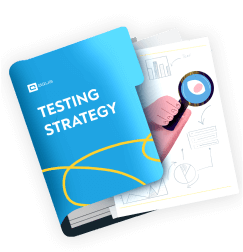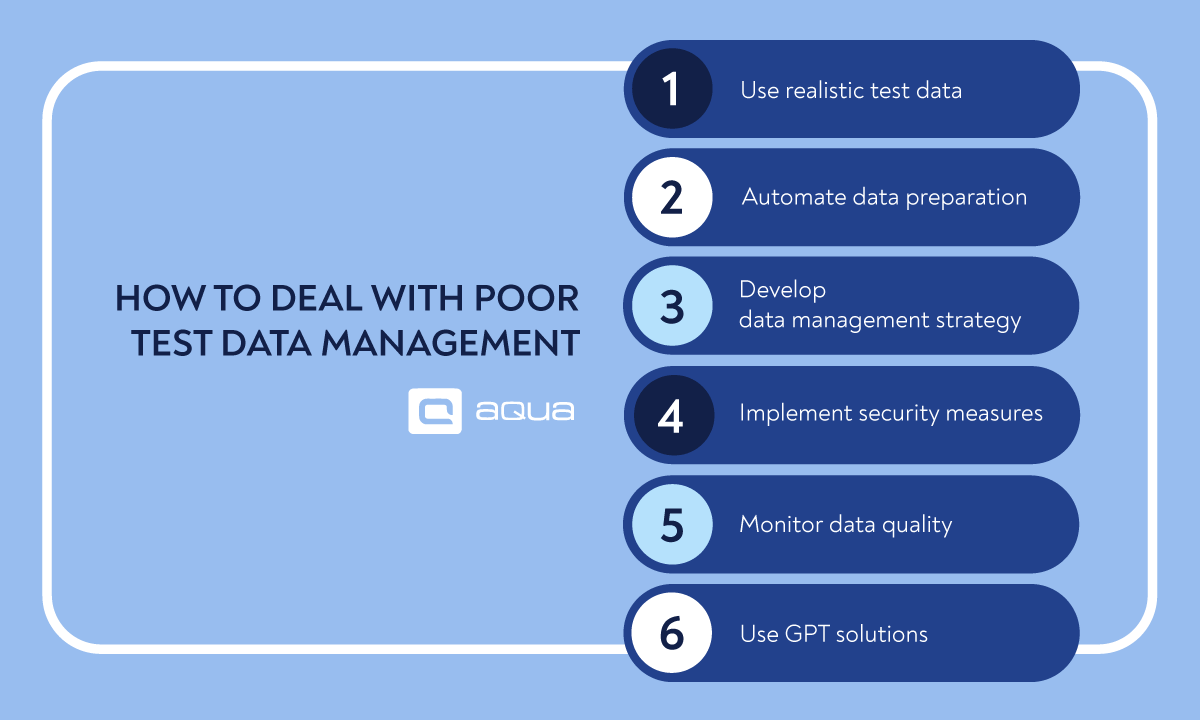If you fail, the results can be real and costly, including dissatisfied customers, lost revenue, damaged reputation, and unhappy employees. But do not let these frighten you, as we will dwell on the most critical enterprise testing strategy mistakes you should avoid and provide you with practical solutions to turn the situation around. So grab a cup of coffee, and let’s get started!
And for a more in-depth exploration of this subject, we invite you to watch our video, where we delve further into the reasons enterprise testing fails.
#1. Lack of clear objectives
In any business, to succeed, first, you need to have a vision and realistic objectives to reach there. One of the main reasons your enterprise test strategy might fail is a lack of clear objectives. When you do not have clear goals, testing becomes haphazard, where testers do not know which areas to focus on and what results to expect.
Furthermore, unclear objectives can lead to over-testing or under-testing certain areas. As a result, testers might fix extremely rare minor issues with little business impact but miss an edge case that makes key functionality collapse.
Here are the steps you can implement to avoid this common mistake:
- Define testing objectives: Ensure clear testing goals for each testing phase and that everyone in the team understands and aligns with them.
- Prioritise testing: Allocate resources to the high-priority areas that require more testing coverage.
- Use test cases: Develop detailed test cases that align with your objectives, and ensure all necessary test cases are executed.
- Pick your tools: You’ll need at least a test management solution to manage test cases. Test automation and bug reporting tools are highly recommended as well. Ideally, you have a single QA-minded solution to manage manual and automated tests.
- Track progress: Monitor the testing progress against objectives and make necessary changes to stay on track.
aqua cloud provides an application testing platform for enterprise that helps you save time, money, and resources. With aqua AI Copilot, you can manage all of your testing throughout, from defining objectives to executing test cases and analysing the results.
Other than delivering high-quality test management solutions, aqua also provides you with a testing strategy template that includes test planning, execution and reporting best practices. If you want to optimise your testing strategy, aqua’s template will provide a comprehensive and effective framework to ensure your testing is efficient and effective.

Use a single template to boost your testing efforts
#2. Ineffective collaboration
One of the main implementation problems with the enterprise testing strategy could be insufficient collaboration. Testing involves multiple stakeholders, including developers, testers, and business analysts, who should work together effectively to achieve thorough and accurate testing. When communication is poor, the process slows, expectations get misaligned, feedback gets delayed, and multiple team members test the same area without coordinating their efforts.
To deal with communication issues, you should do the following:
- Define clear roles and responsibilities of each team member
- Promote transparency where everyone accesses the testing process and results
- Use collaboration tools such as task management systems, chat platforms, and project management software
- Foster open communication, providing regular opportunities for feedback and discussion
- Encourage teamwork and collaboration where each team member expresses their ideas and works together to achieve a common goal
"If everyone is moving forward together, then success takes care of itself."
#3. Poor test data management
Inadequate test data management is another common issue that negatively affects your enterprise testing strategy. If your testing strategy has flawed test data management, you can expect issues to arise soon. For instance, you might realise that you don’t have enough test data to cover all requirements properly or that your test data is outdated, inaccurate, or incomplete. This can lead to false positives and negatives, which can be costly and time-consuming to rectify.
Problems could also start to arise later, just when your testing strategy worked fine. As the software application evolves over time, you may find that your test data is no longer sufficient to cover all requirements and scenarios. In this case, you must update your test data and still spend some time improving test data management practices.
Subpar test data management also leads to security risks, such as unauthorised access to data breaches or sensitive information. Without proper test data management, testers will spend more time and resources on data preparation. This slows down the testing process and delays releases, so you spend more money to ship software and likely earn less from it, too.
Here is how to deal with this critical enterprise testing strategy mistake:
- Use realistic test data that reflects real-world scenarios and use cases
- Automate data preparation using automation tools, saving time and resources
- Develop a data management strategy, including policies for data creation, storage, access, and deletion
- Implement security measures such as data encryption and protection from unauthorised access.
- Monitor data quality, making updates and improvements as needed.
- Use GPT solutions to generate realistic test data that reflects real-world scenarios and use cases, helping to ensure that your testing accurately reflects your system behaviour in the real world.

#4. Insufficient test automation
Test automation mistakes or inaccuracies can become a significant challenge for enterprise testing strategies. Although manual testing is crucial, it is also error-prone, time-consuming, and often unsustainable for large-scale projects as it is difficult to scale testing efforts. It also requires significant resources, leading to higher testing costs.
There are several main ways in which an enterprise testing strategy can fail due to improper test automation. You can automate too much, automate too little, or automate inefficiently.
To improve test automation, you can take these steps:
- Identify areas for automation by conducting a complete analysis of the testing process
- Establish testing standards, ensuring all team members understand best practices and expectations of automated testing
- Invest in automation tools that can streamline the testing process and improve efficiency
One way you can address insufficient test automation and other common problems with enterprise testing strategy is by using an all-in-one solution like aqua. It is a powerful software testing tool that enables you to manage your testing efforts in a single, easy-to-use platform. aqua provides the tools and capabilities you need to improve the efficiency and accuracy of the testing process.
Do not wait any longer to improve your enterprise testing strategy and streamline your testing process
Conclusion
Enterprise testing strategy is a critical initiative that requires careful planning, effective collaboration, and adequate test data management. If you fail to prioritise these key areas, you risk wasting time and resources, compromising accuracy, and facing huge delays in product development. By identifying and addressing the most common enterprise testing strategy mistakes, you will enhance enterprise software testing strategy and ensure that your product meets end users’ needs, leading to better business outcomes and a stronger position in the market.






